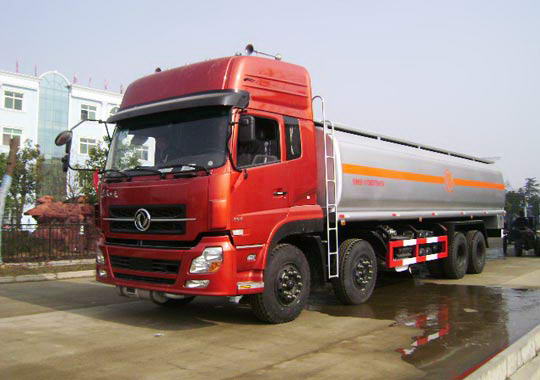Why do you need to install electrostatic grounding straps on the tanker's rear end?
I do not know if you have noticed that there are very few static grounding straps for special vehicles other than tank cars. Why should the electrostatic tank grounding belt be installed on the tail of a tank truck driving on a street? The following small series details for everyone about why the tail tanker should be equipped with static grounding tape?

The main purpose of installing electrostatic grounding straps at the rear of tank trucks is to relieve static electricity and protect safety.
The cause of static electricity in tank trucks is complicated: there are many reasons such as internal friction between oil and cans, external air and dust and oil tank friction, and external static electricity transmission. Even if the loading vehicle is stationary, the metal shell of the oil vehicle is charged due to the flow of air and dust and the conduction of static electricity from the outside (for example, on dry days, people are charged and the oil cart is touched by hand). Static ground straps can conduct these currents to ground. When the oil tanker is running, friction between the oil and the tank will break the neutral state of the two electric powers, so that the charge distribution of each part is uneven and electrostatic. At this time, the flow of oil on the one hand allows the oil and the tank to be charged, on the other hand it can also neutralize the original charge, but with the outside world, the oil tanker can bring some static electricity as a whole, then the electrostatic grounding belt will have a discharge effect. .
The role of the electrostatic grounding strap in conducting electricity is not only the conduction of static electricity in the car to the earth. If the oil tanker is positively charged, static electricity from the earth will be passed on to the tanker; otherwise, the static electricity on the car will be transmitted to the earth.
In short, electrostatic straps must be installed on every tanker truck. Some manufacturers do not install static grounding straps for convenience. This kind of tanker truck is prohibited from flowing into the market. The electrostatic grounding belt does not accumulate static electricity, making the vehicle safer during driving.
Slow-wire cutting processing, also known as slow wire electrical discharge machining (SWEDM), is a precise machining technique used to cut intricate shapes and contours in conductive materials. The process involves using a thin, metallic wire that is continuously fed through a workpiece while an electrical discharge is passed between the wire and the workpiece. This electrical discharge erodes the material, allowing for accurate and precise cutting.
Unlike traditional machining methods, slow wire cutting processing does not involve direct contact between the cutting tool and the workpiece. Instead, a small gap is maintained between the wire and the workpiece, typically filled with a dielectric fluid that acts as a coolant and electrically insulating medium.
The wire used in slow-wire cutting processing is typically made of brass or other conductive materials. The wire is continuously fed through the workpiece in a controlled manner, guided by computer numerical control (CNC) systems. As the wire passes through the workpiece, an electrical discharge is generated between the wire and the workpiece, creating small craters in the material.
Slow-wire cutting processing offers several advantages over traditional machining methods. It allows for precision cutting of complex shapes and contours, even in hard and brittle materials. The process is capable of achieving high cutting speeds and does not create thermal distortion or burrs on the workpiece. Furthermore, slow-wire cutting processing is a non-contact method, which reduces tool wear and prolongs the lifespan of the wire.
Slow-Wire Cutting Processing,Tungsten Steel Wire Processing,Slow Wire Cutting Of Parts,Slow Wire Cutting Of Metal
DONGGUAN YUSHUN PRECISION MOULD CO.LTD , https://www.yushunmolds.com
